A Final Blast of Flaming Fluorescence
Article and photos by Joe Mish
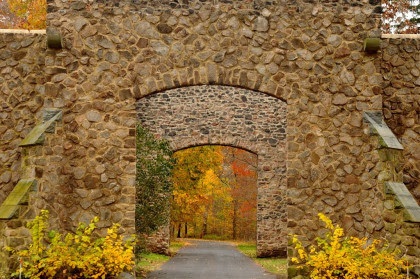

A profusion of spider webs and hopeful strands of silk, looking for a second anchor point, weave throughout the late August woods in an attempt to hold the fleeting summer hostage.
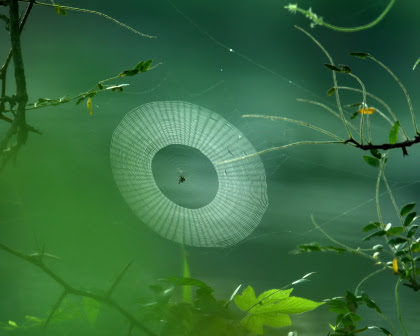
Though the formidable silken net poses enough of an obstruction to divert a hiker’s footsteps, its hold on summer goes unnoticed by the celestial choreography that declares the arrival of autumn.
Color begins to appear as careless drips and blotches on the faded green palette left behind by summer. Scattered specks of yellow mist the crown of a wild cherry tree, as if clearing the sputtering nozzle on a can of yellow spray paint.
Deep scarlet splashes onto leafy vines of virginia creeper to appear as strands of a necklace lying against the perennial greenery of an eastern red cedar.
Swaths and stripes of color appear in fields and resemble an artist’s palette, holding an array of colored oils.
Fields offer the greatest diversity of any stage of plant succession and so, are showcases of color in the fall. The earliest news of the changing seasons is published in full color ads in open fields for all to read.
Pokeweed, drooping with clusters of deep purple-black inkberries, standout among the yellow swaths of fully blossomed goldenrod. The main stem of pokeweed always gets a second glance as it appears to be some odd placed artifact that does not belong. The arrow straight magenta stems are so dramatic in color they deserve a long moment of admiration simply for the boldness of nature’s artistry.
Native cardinal flowers which favor damp soil, is a personal favorite, which signals that the end of summer is near. Blooms begin mid-August and last well into September. A favorite of humming birds, this small, delicate tube-shaped flowers glow with a flat reddest red fluorescence and contrast beautifully against pale green cattail leaves, which often grow nearby. If ever a color was to catch your eye it would be an isolated cardinal flower bloom that glows with the power of a lighthouse beacon.
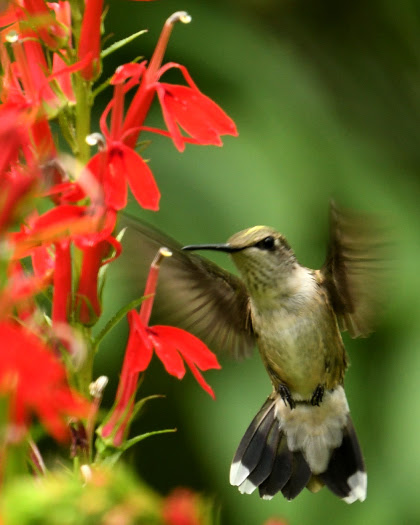
Bright purple ironweed, swamp and common milkweed add to the scene of fall color. Begging a closer look, an isolated stand of ironweed or a yellow swallowtail butterfly on a cluster of milkweed, often offers a surprise in exchange for curiosity. Hidden among the dominant grasses and blooming plants, hide the volunteers. Long thin pods of dogbane, used to make bowstrings and cordage, odd placed wildflowers or other cultivated escapees, find safe harbor and anonymity within these trackless fields.

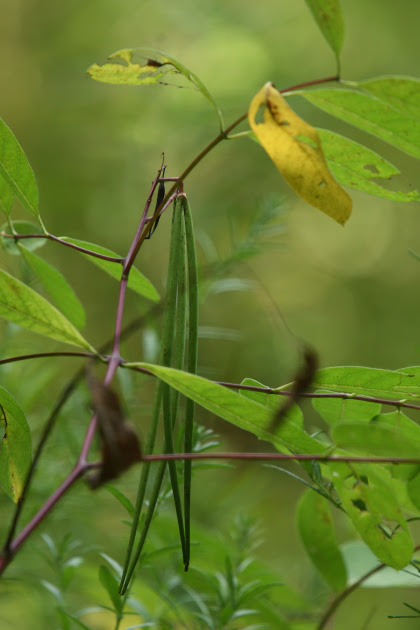
As summer begins and ends with colorful flowers, and Autumn, bearing genes of summer parentage, carries on that tradition of color in a final blast of flaming fluorescence.
Black gum and native persimmon begin the lightshow, subtly at first. Random isolated leaves are electrified and take on the appearance of old fashioned decorative light bulbs, salmon and orange, respectively.
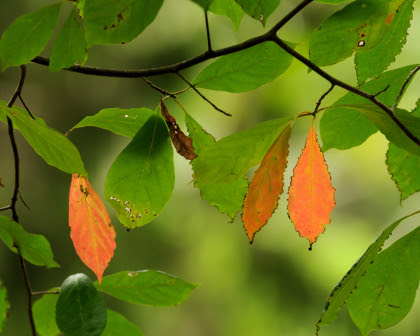
The concocted color combinations composed of various tints used during the early seasonal transition, now overflow, mix and explode in brilliant colors used by October to paint the tree tops.
Oak and sweet gum take the full blast of color shot from October’s paint gun. Add a clear autumn day under full sun and blaze orange oak leaves absolutely glow against the blue sky.
The sweet gum produces a kaleidoscope of color ranging from shades of reddish purple to pure red, maroon, orange and yellow. Individual trees favor one color over the other but all sweet gums offer the complete spectrum of possible tints and shades.
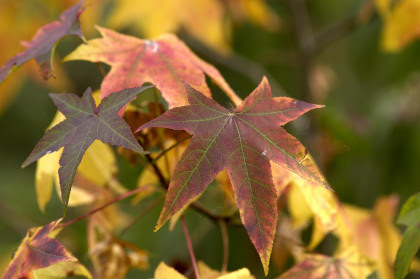
It’s fun to imagine, spiders, as in Charlotte’s Web, spelling out the word, AUTUMN, in silken letters, to foretell the coming season.
Another autumn, like no other, passes through an ageless portal, as all seasons must, only to reappear and fade and reappear and fade again. The ephemeral concept of life seems at odds with the reality of nature.
Author Joe Mish has been running wild in New Jersey since childhood when he found ways to escape his mother’s watchful eyes. He continues to trek the swamps, rivers and thickets seeking to share, with the residents and visitors, all of the state’s natural beauty hidden within full view. To read more of his writing and view more of his gorgeous photographs visit Winter Bear Rising, his wordpress blog. Joe’s series “Nature on the Raritan, Hidden in Plain View” runs monthly as part of the LRWP “Voices of the Watershed” series. Writing and photos used with permission from the author. Contact jjmish57@msn.com. See more articles and photos at winterbearrising.wordpress.com.
